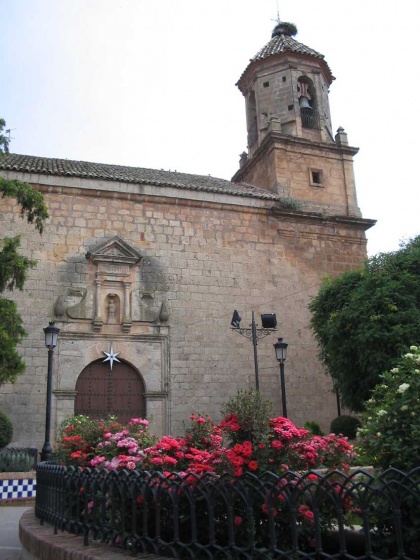Iglesia de San Juan Bautista
Monument
Calle Real, 2, Navas de San Juan
How to get
Its construction dates from the middle of the 16th century. With Renaissance, Mannerist and Baroque stylistic elements, it was started by Juan de Ostiaga and around 1591, Alonso Barba, architect of the Cathedral of Jaén, was appointed as supervisor of the works.
In the first half of the 17th century, the presbytery was covered and the main chapel was restructured, and in the 18th century the interior was repaired and the bell tower was remodeled.
Its plan is very elongated and has a single nave arranged in three unequal sections: The presbytery, also elongated, covered with a barrel vault with lunettes; a front space, a little wider, covered with a groin vault and flanked laterally by niche chapels; the third section is centralized and is covered with a half-orange vault on pendentives. In the main altar the painter from Linar Francisco Baños, in 1961 painted a fresco mural in his schematic and geometrical pictorial line.
The most significant elements of the facade are:
The portal has a simple semicircular arch with trapezoidal voussoirs and in the upper body, a niche with Doric columns - at its sides, plates with cut diamond points and pinnacles at the ends - Doric entanglement and triangular pediment.
The bell tower has a first body with a square plan, and the second, with a polygonal plan, topped by a conical volume covered with Arabic tile.
In this Church, San Juan Bautista, patron of the town, is worshiped, whose polychrome carving is the work of the Santiago sculptor Jacinto Higueras (approximately 1940). It is classic in style, with harmonic and perfect proportions.
One of the most important and valuable pieces preserved in this church is a silver cross adorned with bas-reliefs that represent the Old Testament on one side and the New Testament on the other.
From June 24 to 29, the festivities are celebrated in honor of San Juan Bautista. Among the ludic events, “the running of the bulls” stand out, a custom in which the young men run through the streets of the town of reses bravas to the bullring, since time immemorial. In the afternoon of June 24, the Patron Saint walks through the streets of the town until he reaches the bullring, to the beat of pasodobles, to go around the ring as a blessing and approval of the popular acts prepared in his honor.




